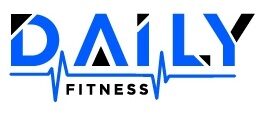Regarding fitness, plenty of cliches such as ’stick to routines,’ ’lift heavier,’ or ’consume protein.’ But what if there are vital aspects of performance that remain unwritten? They love to show you infomercials, tell you all the tips, and then hide little facts that can spoil your exercise goals. The good news: this article will explore all the workout secrets nobody tells you about to help you train smarter and achieve your goals.
1. Supplements and Their Effects
However, navigating the seas of supplements can be overwhelming, or at least knowing what your body needs. Protein powders can be helpful if you have difficulty consuming adequate amounts of protein in your diet. Creatine has been scientifically shown to increase strength, endurance, and muscle mass. Using pre-workout supplements increases energy before working out, but those containing high levels of caffeine cause jitters and crashes. If you are using supplements such as beta-alanine, you need to understand all the beta-alanine side effects and how to help minimize them, such as itching. This can help you gauge the correct dosage to use for exercise and help you shop for better supplements with fewer effects.
2. The Importance of Recovery over More Workouts
It is common to assume that regular workouts mean faster and better results—however, overtraining leads to fatigue, muscular catabolism, and higher injury vulnerability. Recovery is where all the serious business of muscle building takes place. Prioritizing sleep at night ensures one is well-rested, recovered, and strengthened the following day. Aerobic activity, like walking, gentle stretching, or yoga, improves blood flow and can prevent muscles from becoming stiff. Also, rest days help your muscles recover fully so they can be more assertive and handle the next round of workouts.
3. Your Warm-Up and Cool-Down Are Non-Negotiable
Some mistakes that lead to injuries and hamper recovery include failure to warm up and cool down. Some examples of warming up include leg swings, arm circles, and light jogging to help proper muscle warm up and prepare the muscles for stretching. This increases blood flow and prepares the body for action. Stretches that require slow movements, coupled with deep draws of breath, can also prevent tightening and soreness of muscles after training and aid in recovery time. Implementing these key approaches into the work process will dramatically enhance performance and durability.
4. Your Training Should Adapt to Your Lifestyle
Exercising in a generic format without regard to individual characteristics might be destructive. A strict six-day-a-week training plan may only frustrate the exerciser if one has a rigorous work schedule or sleeps at odd hours. Instead, adjust your workouts according to your energy, ability to recover, and other commitments you might have for the day. Training volume also has its advantages because it helps prevent physical and mental exhaustion while at the same time leading to more strength and fitness gains.
Remember, Discipline is the Name of the Game!
Having clear goals and timelines achieves better results and holds you in check. Create a new bodybuilding workout schedule that can easily be incorporated into a daily routine to minimize these excuses. Additionally, have a support system, such as an accountability partner, a fitness group, or a coach, to add to it. Lastly, don’t forget to choose the right supplements and equipment for your workouts to get the best result.





